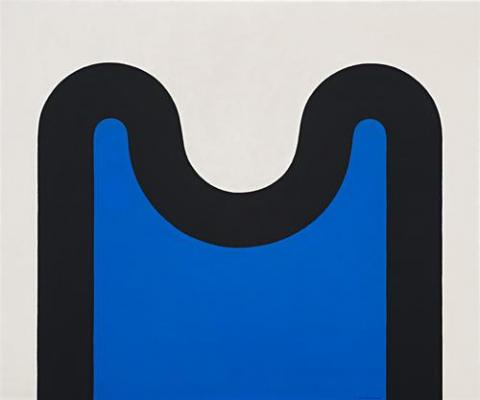MOSQUE I, 1968
John Coburn
synthetic polymer paint on canvas
152.0 x 183.0 cm
signed lower right: Coburn
Sotheby's, Melbourne, 26 April 1999, lot 200
Eva Breuer Art Dealer, Sydney
Private collection, Sydney
Amadio, N., John Coburn: Paintings, Craftsman House, Sydney, 1988, cat. 28, p. 68-69 (illus.)
'For a while in the sixties, Coburn, whose later works blaze with the force of emotional content and hint at a profundity of hidden ambiguities, followed the colourfield trends in the art of that time. Devoid of content, these works underlined and proved beyond doubt that Coburn was a born master of colour, proportion and design. He was able to use colour like a source of energy, his force-field of birth and reason. Obviously it would not satisfy Coburn for long but his works at that time were highly successful examples of the genre.
'Mosque I is representative of a particular period of very simple geometric paintings that I was doing in the sixties. Hard-edge was the main stream in art at that time. The most characteristic paintings of the sixties were Pop Art and hard-edge colourfield paintings. There are only three colours in Mosque I. White is important as colour here. It is a strong image, where I was concerned with the relationship of areas. Placement is urgent. I called it Mosque I because it reminds me of the Blue Mosque at Isfahan.'1
1. Amadio, N., John Coburn: Paintings, Craftsman House, Sydney, 1988, p. 68
